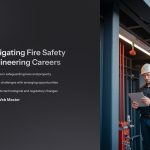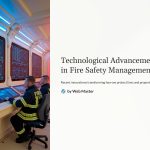 In the rapidly evolving landscape of industrial safety, fire safety engineers play a pivotal role in safeguarding lives and property. As industries expand and technologies advance, these professionals face a unique set of challenges and opportunities that shape their careers and the safety standards of our communities.
In the rapidly evolving landscape of industrial safety, fire safety engineers play a pivotal role in safeguarding lives and property. As industries expand and technologies advance, these professionals face a unique set of challenges and opportunities that shape their careers and the safety standards of our communities.
Fire Safety Engineering: A Critical Overview
Fire safety engineering encompasses the application of scientific and engineering principles to protect people, property, and the environment from fire hazards. This discipline involves designing fire protection systems, conducting risk assessments, ensuring compliance with safety regulations, and educating stakeholders about fire prevention strategies.

Evolving Regulatory Frameworks
One of the primary challenges fire safety engineers encounter is the continuous evolution of safety regulations. Governments and international bodies regularly update safety standards to address emerging risks and technological advancements. Staying abreast of these changes requires ongoing education and adaptability.
For instance, the enforcement of the Industrial Safety and Health Act mandates that certain businesses employ industrial safety managers or delegate such responsibilities to specialized agencies. This legislation underscores the critical role of safety professionals in various industries. citeturn0search8

Technological Advancements and Integration
The integration of advanced technologies, such as smart sensors and automated suppression systems, presents both challenges and opportunities. Fire safety engineers must be proficient in these technologies to design and implement effective fire protection strategies.
Embracing these innovations can lead to more efficient and responsive fire safety measures, enhancing overall safety and potentially reducing costs.

Urbanization and Infrastructure Development
Rapid urbanization and the development of complex infrastructures increase the demand for comprehensive fire safety solutions. Engineers must address the unique challenges posed by high-density living spaces, mixed-use developments, and aging infrastructure.
This scenario offers opportunities to innovate and develop customized safety solutions that cater to the specific needs of modern urban environments.

Environmental and Sustainability Considerations
The global emphasis on sustainability influences fire safety engineering practices. Professionals are challenged to design fire protection systems that not only ensure safety but also align with environmental sustainability goals.
This includes selecting eco-friendly materials, optimizing energy consumption, and minimizing the environmental impact of fire safety measures.

Cross-Disciplinary Collaboration
Fire safety engineers increasingly collaborate with professionals from other disciplines, such as architects, urban planners, and environmental scientists. This interdisciplinary approach enhances the effectiveness of safety strategies but requires strong communication and teamwork skills.
Such collaborations open avenues for holistic safety solutions that integrate seamlessly into various aspects of design and planning.

Continuous Professional Development
To remain effective in their roles, fire safety engineers must commit to continuous professional development. Engaging in ongoing education, certifications, and participation in professional organizations ensures they stay current with industry trends and best practices.
This commitment not only enhances individual careers but also elevates the overall standards of fire safety engineering.
*Capturing unauthorized images is prohibited*







